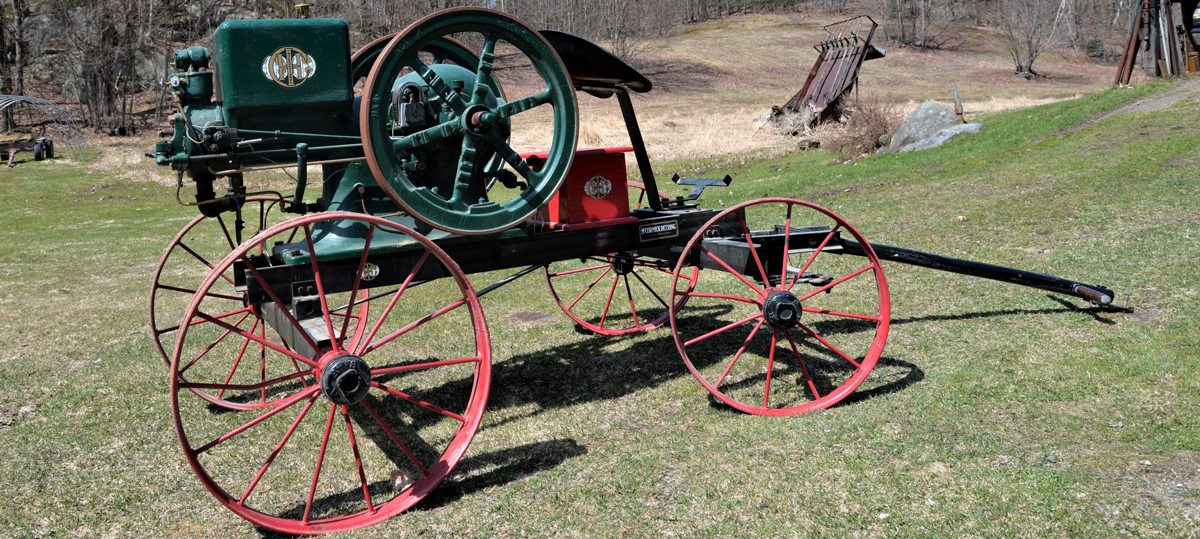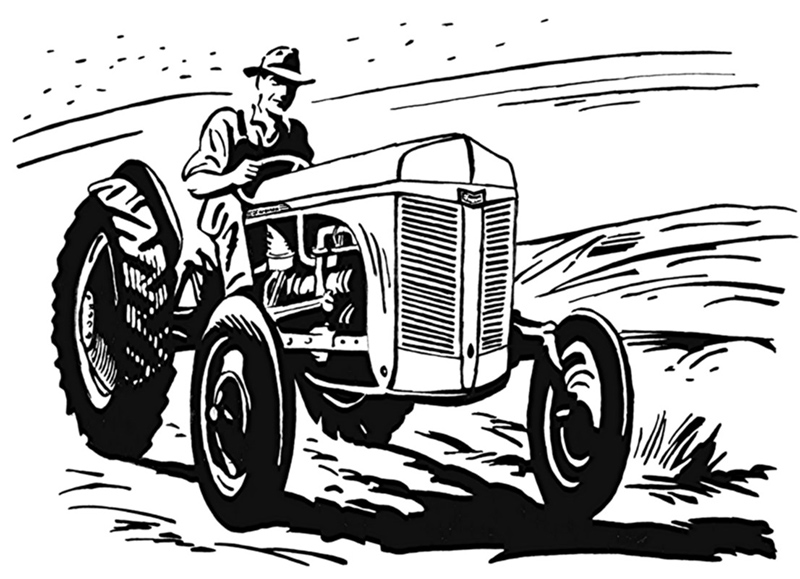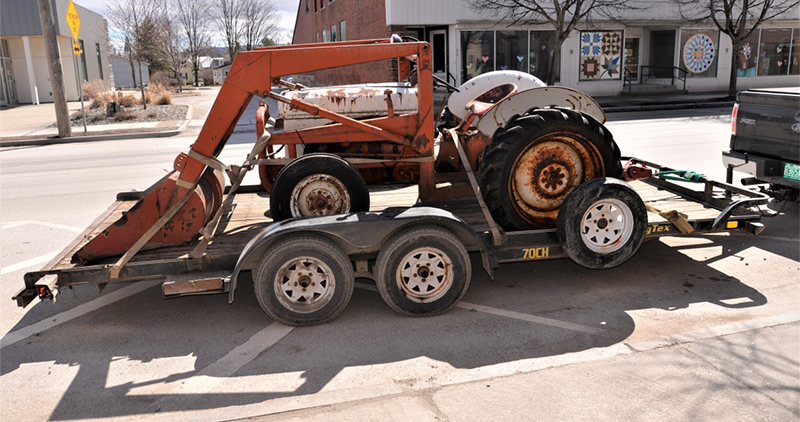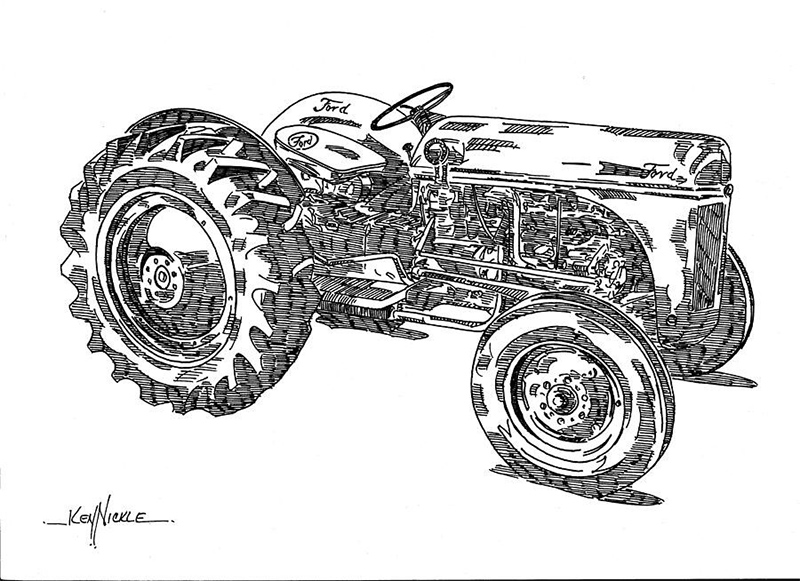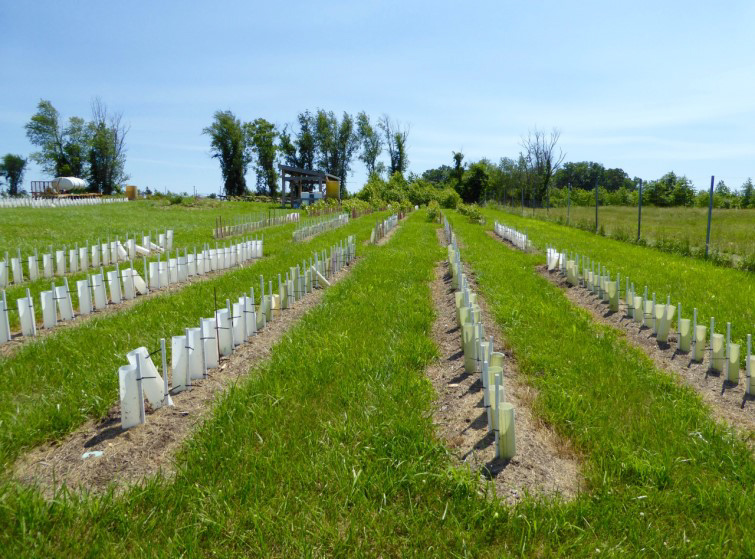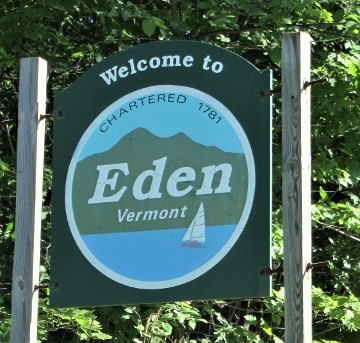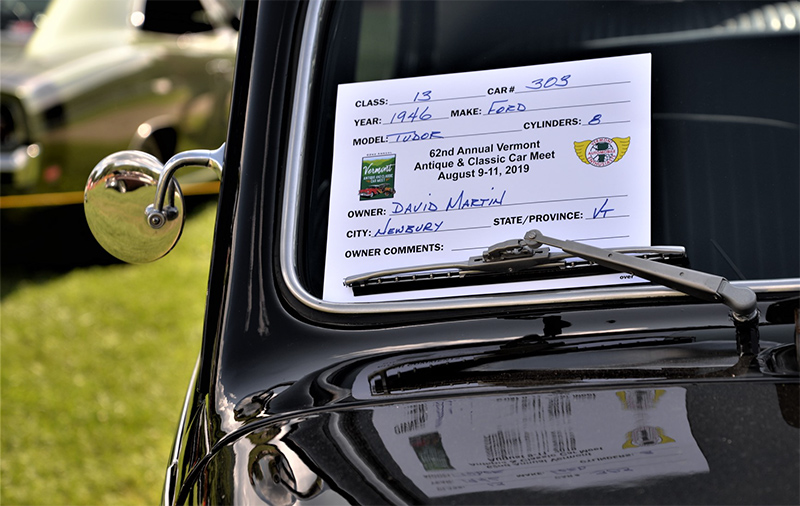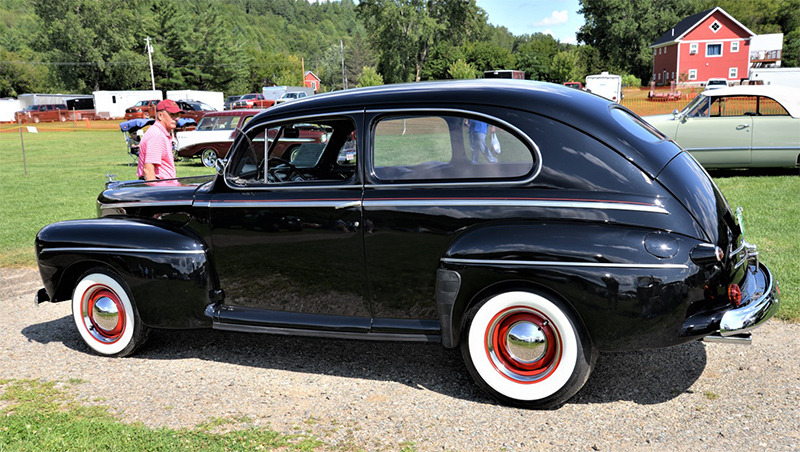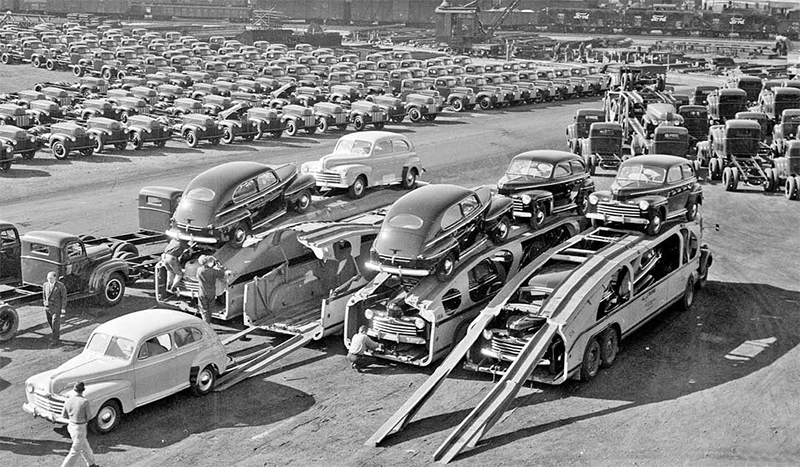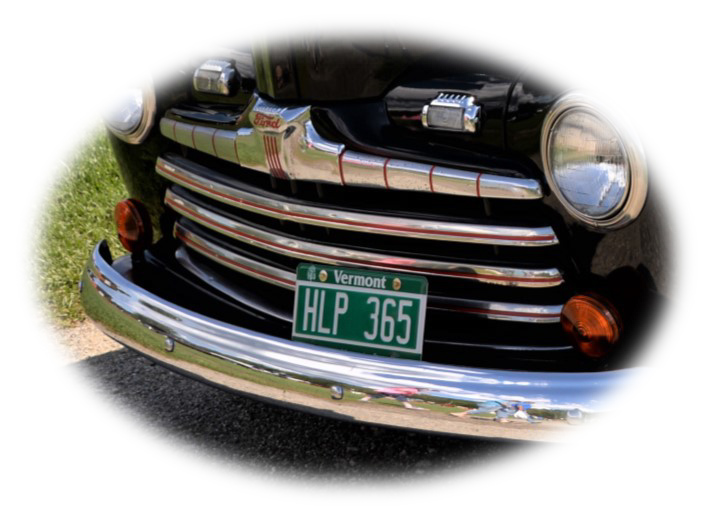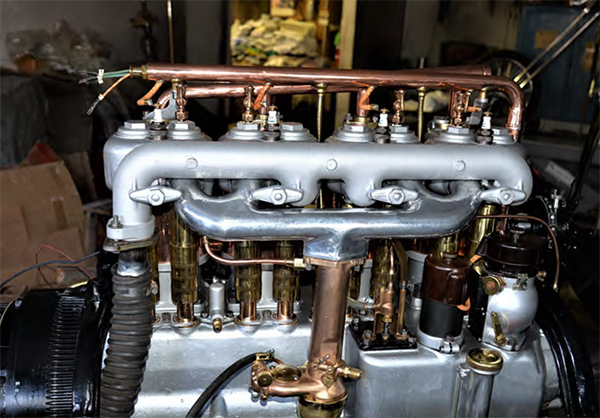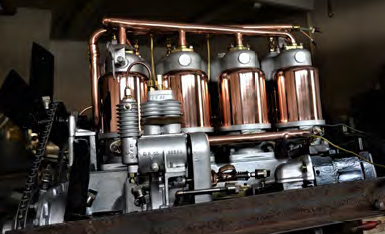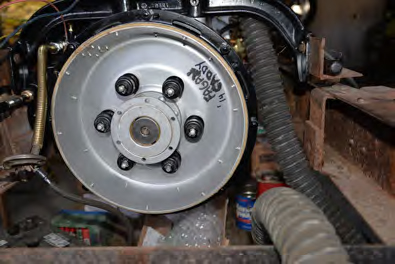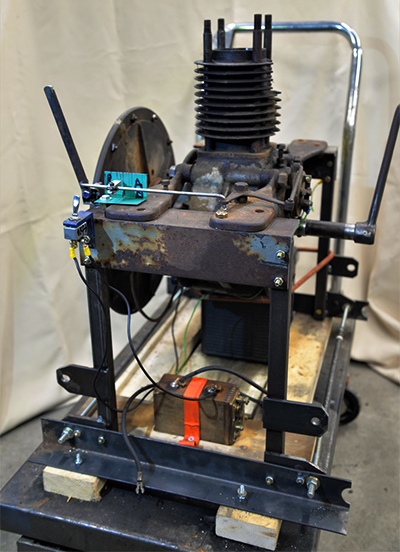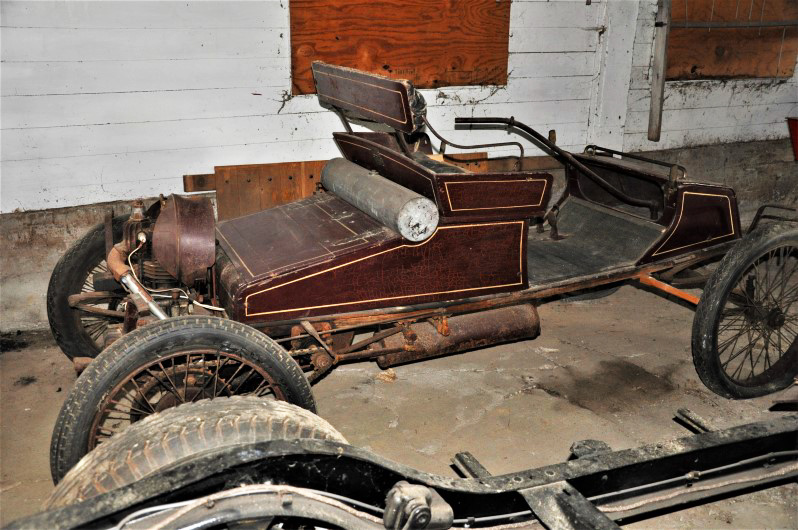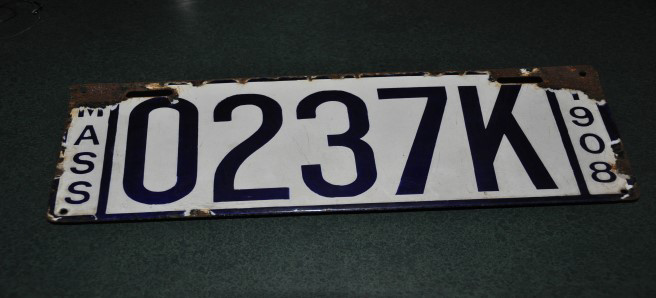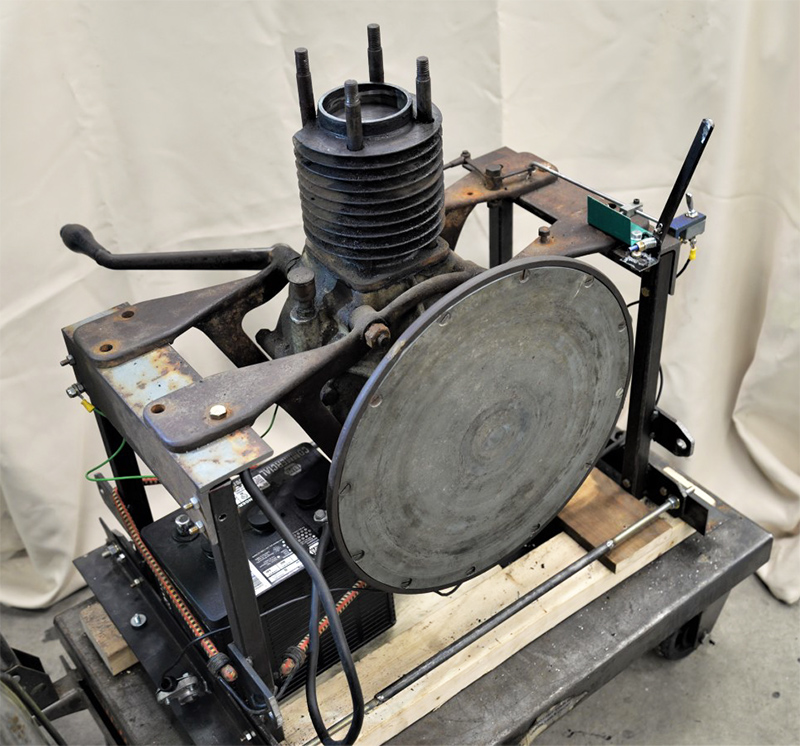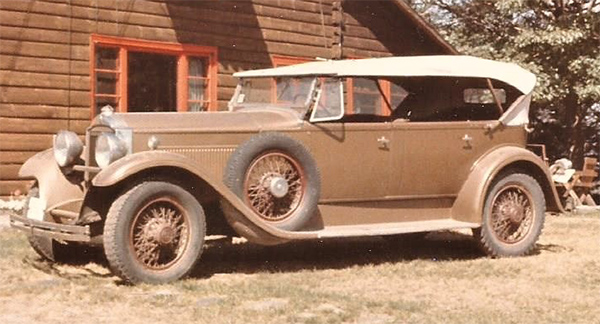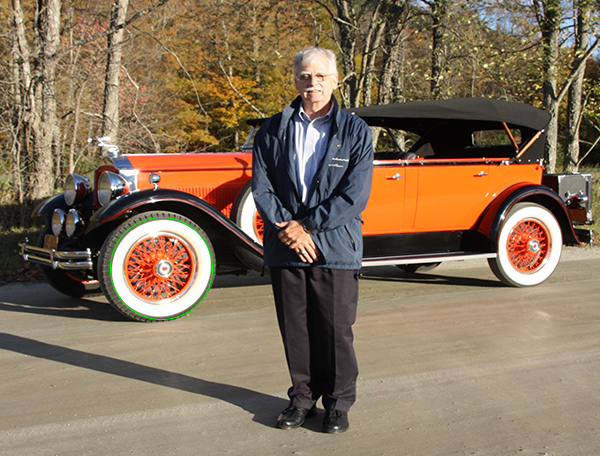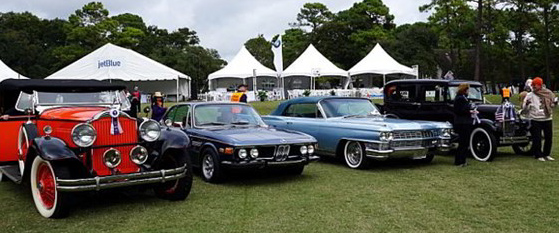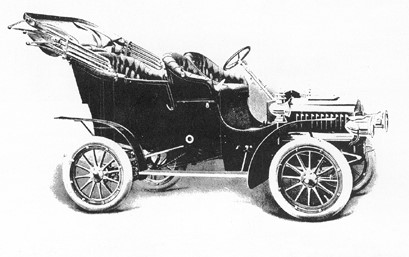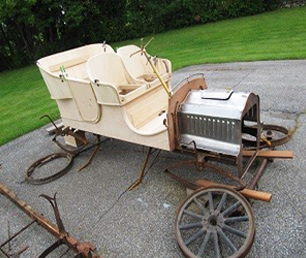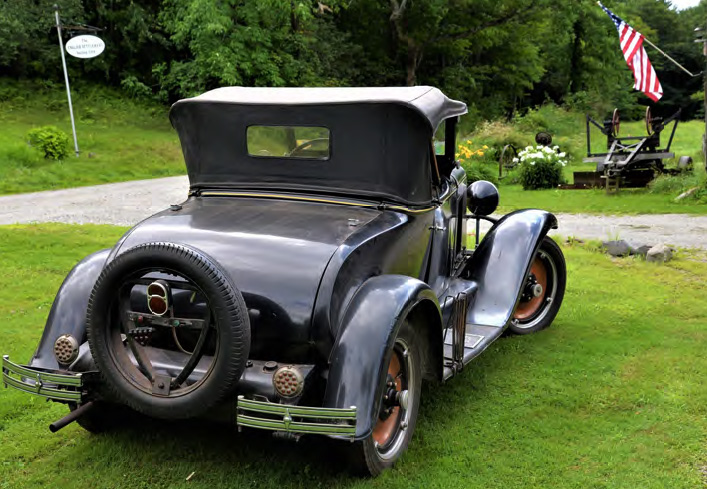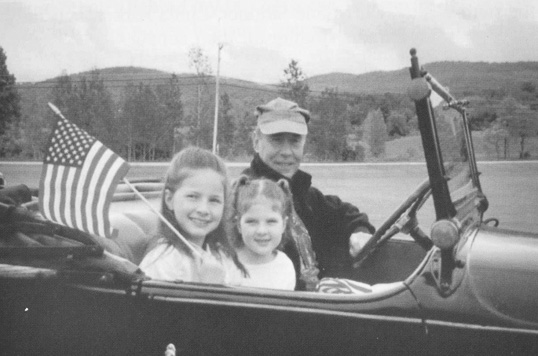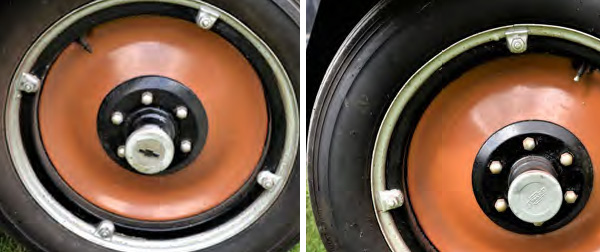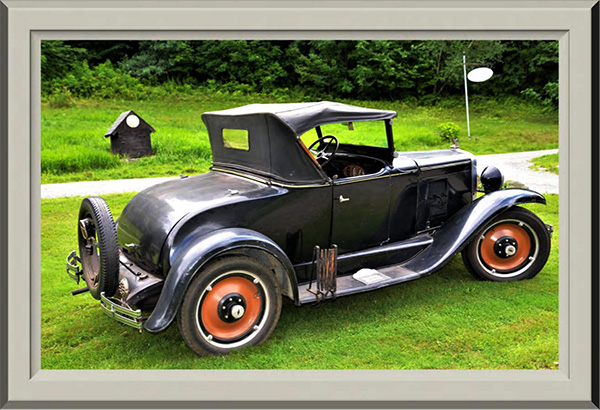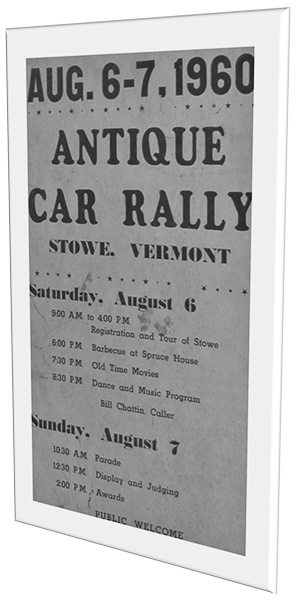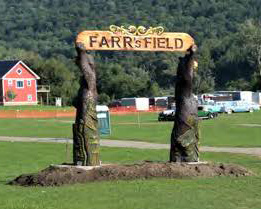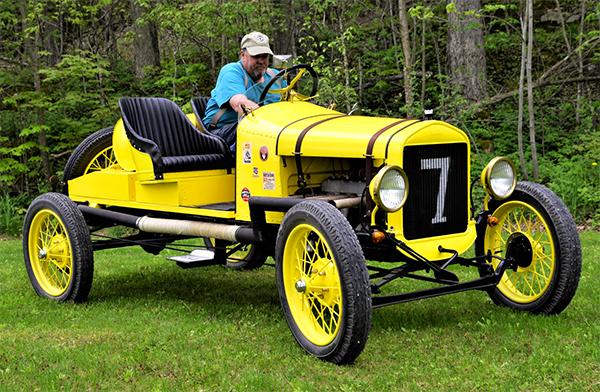The Right Power for the Bigger Jobs
Wherever power is needed, the practical and careful man buys a McCormick-Deering 6HP engine to do his work. The 6HP engine has water-cooled cylinder head and belt pulley can be put on either side.
I believe it was the 2006 Shelburne Vt car show where I first met Gael. I was involved setting up a display of my Galloway engine belted to a Papec Silage blower.
I had no idea who this gentleman was that ventured into the display but we introduced ourselves to each other and struck up a conversation. He seemed quite mesmerized by the displays our club was beginning to get operational. As words unfolded, he mentioned he had a few of these engines. Of course as with any hobbyist my ears then really “perked up” with the prospect of a new find. As memory serves me, he did not know what or how many he had or at least that was what he was leading me to believe.
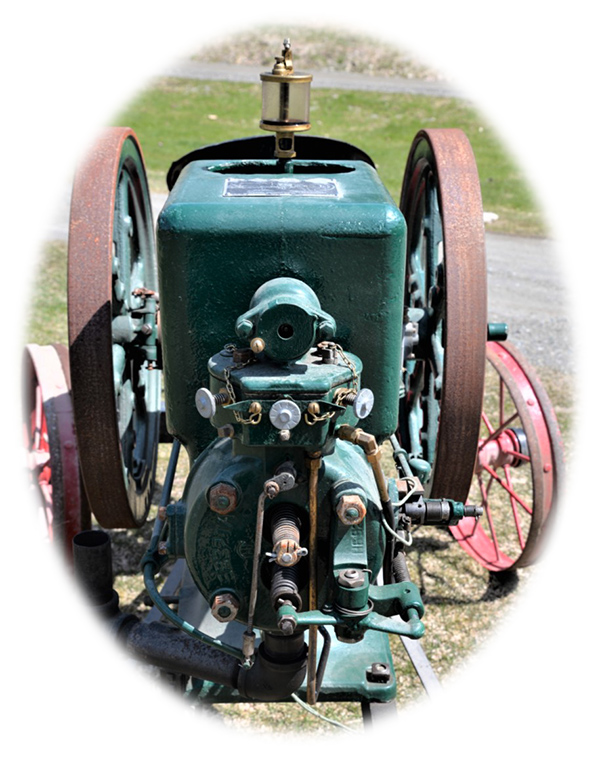
Eventually, the fateful question was asked by Gael Boardman. “Would you be interested in getting a couple of them running?” Somehow my nature of: shoot first ask later, did not kick in. The more rational Dave, answered Gael, “maybe but I would like to see what they are and what you have in mind.” He answered with if you get one running then I will give you the other as payment. That inner voice said: how could I go wrong? To this day, I am still amazed I stuck with my first response that I would need to see the engines before making a commitment.
Again, memory is fuzzy but I remember that it took until November for me to get to Underhill for my first preview. As many of you know, visiting Gael and his collection was not a quick venture. Maybe it was a teachable moment, that it is not about the trip but the journey. I was beginning to understand Gael’s love for so much of our past through his diverse collection. I viewed his air-cooled Same tractor, Army Truck, WW2 bulldozer, memorabilia of all sorts, and a Chevy Coupe with overheating issues which was really perplexing him. Each piece Gael seemed to know where it came from, and what it had done, how long he had owned it, and a justification of it.
Eventually, we got to the two engines he had in mind he wanted me to work on. Both were larger than anything I had or laid a wrench to. One was a McCormick Deering 6 HP (pictured above). I knew that, as I owned the smaller 1 ½ and 3 HP models. The other I was unsure of, other than it had a Fairbanks Morse tag. Both pieces were very complete and original engines from the local area according to Gael. It sure seemed like a sweetheart deal. Again, it happened, reason over excitement. My response, Gael let me think about it and I will call you.
Needless to say, I soon called back and said sure I will get both going and Gael you decide which one you keep. It was not until the following summer that I made the second Underhill trip to retrieve both engines. My thinking that the loading process would be simple, quick and somewhat effortless, proved to be flawed as no tractor or other powerful machine Gael possessed was used. I soon realized Gael has ancestors dating back to the pyramids as we moved both engines onto my trailer using pipe as rollers and a come-a-long all the while he was saying: work like the Egyptians.
I decided to work on both engines simultaneously but really concentrate on the McCormick as it appeared the quicker of the two since the Fairbanks had a serious issue with rust.
My employment journey had taken me to be an instructor/aid role at Hannaford Career Center in Middlebury. The perfect situation, a great place to work, students to help and teach basic engine operation and the detail needed to restore an 80 year old piece and the use of tools I do not possess. Although to complete the engine still required a bit of work, in reality a lot of work. Tasks included; complete disassembly of all components, magneto rebuild, gas tank replaced, igniter refurbished, rings unstuck from the piston, valves and seats refaced plus the springs replaced, fuel pump and lines replaced, mixer rebuilt and the governor repaired. As most of you know, projects tend to take on a life and direction of their own. I decided this project should not just be a “just get it running” one but, a complete restoration including repainting and a period correct horse drawn cart to mount and move the engine on.
Finally in the spring of 2012, Gael got a call from me asking if he would enjoy being at Hannaford for startup day. I think you all know the answer and the smile Gael had when he heard the engine run for the first time since he owned it. Later that spring, the engine returned home to Underhill where it still resides.
Thanks Gael.
The IHC/McCormick Deering Type M gasoline engine was debuted in 1917 and built until 1937. All M engines were throttle governed and both low tension ignitor and high tension spark plug ignition systems were used. A unique feature of these engines was a completely enclosed, but dry crankcase. The crankshaft main bearings and rod were still greased by mechanical grease cups and the cylinder oiled by a drip oiler. All timing gears were inside, while the remaining parts, including the cam, were outside the crankcase. No oil was stored inside the engine.
“Right Power for the Bigger Jobs” was IHC’s motto.
It furnishes plenty of power for the hay baler, feed grinder, corn sheller, buzz saw, cane mill, deep well pump and other hard work.










